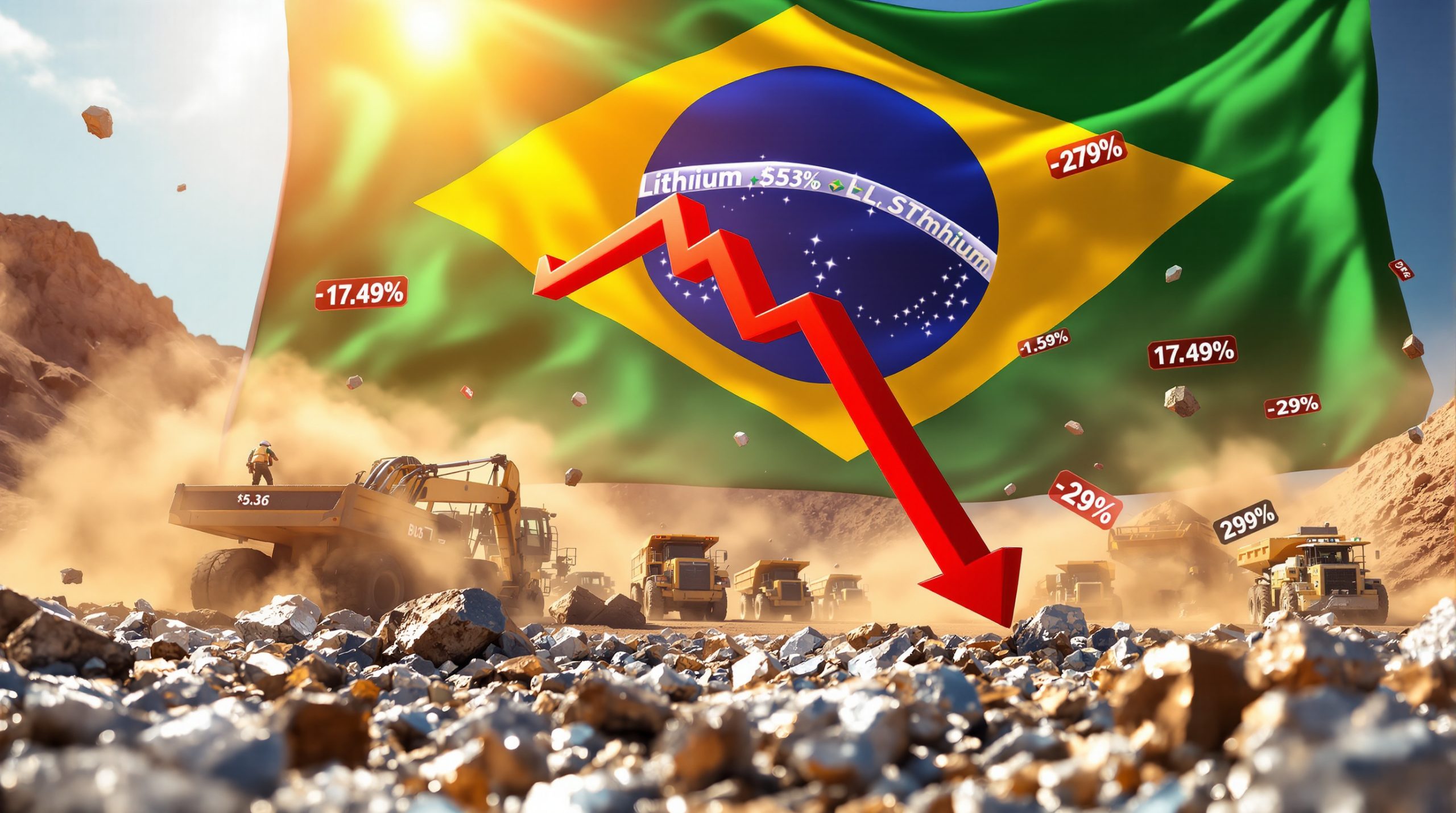Gold Flow Reversal: Switzerland's Gold Imports from US After Trump's Tariff Exclusion
Swiss customs data from March 2025 revealed a thirteen-month high in gold imports from the United States, totaling 25.5 metric tons, a sharp increase from 12.1 tons in February. Concurrently, Swiss gold exports to the U.S. fell 32% month-on-month to 103.2 tons. This reversal followed President Donald Trump's April 2025 decision to exclude precious metals from reciprocal tariffs, unwinding precautionary shipments made after his November 2024 re-election.
Comex gold stocks peaked at 45.1 million ounces (1,400+ metric tons) by April 4, 2025, but fell by 1.5 million ounces ($4.8 billion) within weeks, signaling a gradual return to Switzerland's status as the global gold hub. This has significant implications for gold market analysis and investment strategies going forward.
Why is Gold Returning to Switzerland from the US?
The Scale of the Reversal
-
Swiss imports from the U.S.: 25.5 metric tons in March 2025 (up 110% from February).
-
Swiss exports to the U.S.: 103.2 tons in March (down 32% from February).
-
Comex outflows: 1.5 million troy ounces withdrawn by mid-April, the first sustained outflow in 14 months.
Key Statistics & Data
-
The U.S. holds 43.6 million ounces (1,357 tons) of gold in Comex vaults as of April 2025, sufficient to supply domestic physical demand (~115 tons/year) for 12 years.
-
$80 billion in gold, silver, and platinum was moved to U.S. warehouses between December 2024 and March 2025.
Expert Quotes & Insights
-
Ross Norman, independent analyst: "A great time to be in gold logistics and gold refining".
-
Swiss refinery source: "The outflow will be modest… gold in U.S. vaults remains a hedge against uncertainty".
Technical Details
- Comex futures premium: Dislocation caused by tariff fears began unwinding post-April 4, reducing incentives for U.S. storage.
Swiss refineries have reported unprecedented activity levels throughout this entire process, with many operating extended hours to accommodate the massive gold flows. The rapid movement of such enormous quantities of precious metals represents one of the largest peacetime transfers of wealth in recent history.
How Did the US-Switzerland Gold Movement Begin?
Pre-Tariff Precautionary Measures
-
Comex stockpile growth: Rose from 17.1 million ounces (November 2024) to 45.1 million ounces (April 2025).
-
Delivery value: Precious metals worth $80 billion delivered to U.S. warehouses.
Key Statistics & Data
-
Daily inflows: Averaged ~3.2 million ounces/month during peak relocation.
-
Swiss refinery activity: Unprecedented throughput to meet U.S. demand.
Expert Quotes & Insights
- Swiss logistics firm (unnamed): "We operated 24/7 to meet shipment deadlines".
Technical Details
- Security protocols: High-value cargo transported via armored flights and insured convoys.
The movement began immediately following Trump's November 2024 election victory, as traders and institutional investors became increasingly concerned about potential trade policies that might restrict precious metals movements or impose costly tariffs. This created a unique arbitrage opportunity for those able to quickly relocate gold to U.S. vaults before any policy implementation.
The Massive Scale of Precious Metals Movement
Between December 2024 and March 2025, gold shipments to New York increased dramatically as a precautionary measure. The movement was so significant that specialized security firms reported a shortage of armored transport capacity during this period. Swiss refineries temporarily shifted operations to accommodate the surge, prioritizing deliveries destined for U.S. warehouses.
For eight consecutive days in April 2025, gold outflows from U.S. warehouses were recorded—the first such sustained withdrawal pattern in 14 months. This marked a clear inflection point in the gold flow dynamics between the two countries.
What Caused the Reversal in Gold Flows?
Trump Administration's Tariff Decision
-
Exclusion date: Early April 2025.
-
Market response: Immediate futures premium contraction, reducing arbitrage incentives.
Key Statistics & Data
- Comex depletion rate: 1.5 million ounces withdrawn in under two weeks.
Technical Details
- Futures market mechanics: How tariff exclusion normalized backwardation curves.
The Trump administration's decision to exclude gold, silver, and platinum from reciprocal tariffs came after extensive lobbying from both the financial sector and jewelry industry, according to Reuters reporting. This policy clarification immediately removed the primary incentive for keeping precious metals in U.S. vaults, as the tariff risk—the original catalyst for the massive influx—no longer existed.
Market Normalization Process
With the tariff threat eliminated, Comex futures premiums began unwinding after experiencing significant market dislocation. The premium between spot gold prices and futures contracts, which had widened considerably during the uncertainty period, began normalizing to historical averages.
Current U.S. gold vault holdings stand at 43.6 million ounces (1,357 metric tons), still significantly higher than pre-election levels. Industry analysts expect the outflow to continue at a measured pace, as many market participants have decided to maintain some U.S. holdings as a hedge against ongoing geopolitical and economic uncertainties.
What is Switzerland's Role in Global Gold Markets?
Switzerland as a Gold Hub
-
Refining capacity: Processes ~70% of global gold.
-
Transit volume: ~1,500 metric tons/year pass through Swiss vaults.
Expert Quotes & Insights
- Ross Norman: "Switzerland's infrastructure is unmatched for bulk handling".
Switzerland has long been the world's premier bullion refining and transit center, with a reputation built on neutrality, security, and technical expertise. The country's strategic location between major gold producers in Africa and consumers in Asia and Europe positions it perfectly as a global hub for precious metals.
Swiss refineries are renowned for their ability to process gold to the highest purity standards (99.99%), transforming raw gold doré from mines into investment-grade bars and coins. The country's sophisticated infrastructure for precious metals handling and certification ensures that gold processed in Switzerland commands premium prices in international markets.
Economic Impact of Gold Movement
The recent gold flow reversal has been a boon for Switzerland's precious metals sector. As Ross Norman, an independent analyst, noted: "It's a great time to be in gold logistics and gold refining." Swiss refineries have experienced increased business activity, with many reporting operational expansions to handle the surge in demand.
The logistics operations involved in transcontinental precious metals movement are complex and highly specialized. Security concerns, insurance requirements, and verification procedures all add layers of complexity to the process. Swiss companies specializing in these services have developed unparalleled expertise, allowing them to efficiently manage the recent unprecedented volumes.
What Does This Mean for Gold Markets?
Current US Gold Supply Situation
-
Physical demand: U.S. retail investors consume ~115 tons/year.
-
Surplus duration: Comex stocks could supply demand until ~2037.
Future Implications
-
Price volatility: Reduced futures premium may stabilize short-term pricing.
-
Long-term hedging: Institutional investors retain U.S. holdings amid geopolitical risks.
The United States typically consumes about 115 tons of gold annually in physical coins and bars for retail investment. With current Comex-registered warehouse holdings at nearly 1,357 tons, this supply would theoretically be sufficient to meet domestic physical market demand for almost 12 years without additional imports.
This oversupply situation creates a unique dynamic in the U.S. gold market, potentially suppressing premiums on physical products and affecting pricing structures throughout the supply chain. However, it also serves as a partial hedge against ongoing wider market uncertainty, including potential future policy changes.
Future Implications
Gold flows are likely to continue normalizing as the market adjusts to the tariff exclusion reality. Switzerland is gradually regaining its position as the primary global gold hub, though the process may take several months to fully settle into a new equilibrium.
Market participants will continue monitoring the Trump administration's trade policies regarding precious metals, as any policy reversals could trigger another wave of protective movements. This vigilance is reflected in the decision by many institutional investors to maintain significant holdings in U.S. vaults despite the immediate tariff threat having subsided. Understanding these factors is crucial for both investing vs speculating in the precious metals market.
FAQ About Gold Movement Between US and Switzerland
Why was gold being sent to the US in the first place?
Gold was being sent to the US as a precautionary measure against potential tariffs that traders feared President Trump might implement on precious metals imports after his November 2024 election victory. This was essentially a risk-management strategy employed by major institutions and investors to avoid potential future import duties.
How much gold was moved to the US before the tariff exclusion?
Comex warehouses saw gold stocks rise from 17.1 million ounces in November 2024 to an all-time high of 45.1 million ounces (approximately 1,400 metric tons) by April 4, 2025. This represents one of the largest peacetime movements of gold in recent history, worth approximately $80 billion at current market prices.
What prompted the reversal in gold flows?
The Trump administration's decision to exclude gold, silver, and platinum from reciprocal tariffs in early April 2025 removed the urgency to store precious metals in New York, causing flows to begin reversing back toward Switzerland. According to Energy News Oedigital, this official policy clarification eliminated the primary rationale for the protective stockpiling that had occurred since November 2024.
Will all the gold return to Switzerland?
No, the outflow is expected to be modest as some market participants maintain US holdings as a hedge against ongoing market uncertainty. However, the trend shows a clear directional shift back toward Switzerland. Industry experts anticipate perhaps 30-40% of the recently moved gold may return to Switzerland within the year, with the remainder staying in U.S. vaults as a strategic hedge against future policy changes. This reflects gold's role as a hedge against various types of market risks.
Disclaimer: This article contains analysis and speculation about future gold market movements based on current trends and historical patterns. These predictions should not be considered financial advice, and actual market outcomes may differ significantly from those presented here. For serious investors, exploring various gold ETF strategies might be worth considering. Additionally, understanding market dynamics can help contextualize these gold movements within the broader financial ecosystem.
Interested in Spotting Major Mineral Discoveries Before the Market?
Don't miss your opportunity to capitalise on significant ASX mineral discoveries with Discovery Alert's proprietary Discovery IQ model, which delivers instant, actionable insights for both short-term traders and long-term investors. Visit the Discovery Alert discoveries page to understand how historic discoveries have generated substantial returns and begin your 30-day free trial today.




